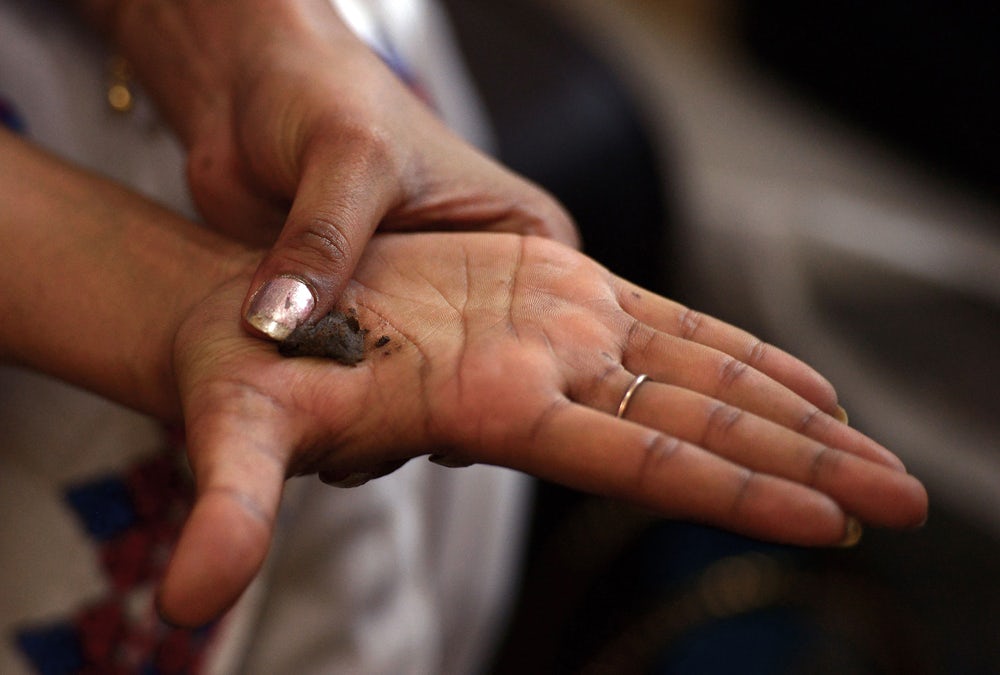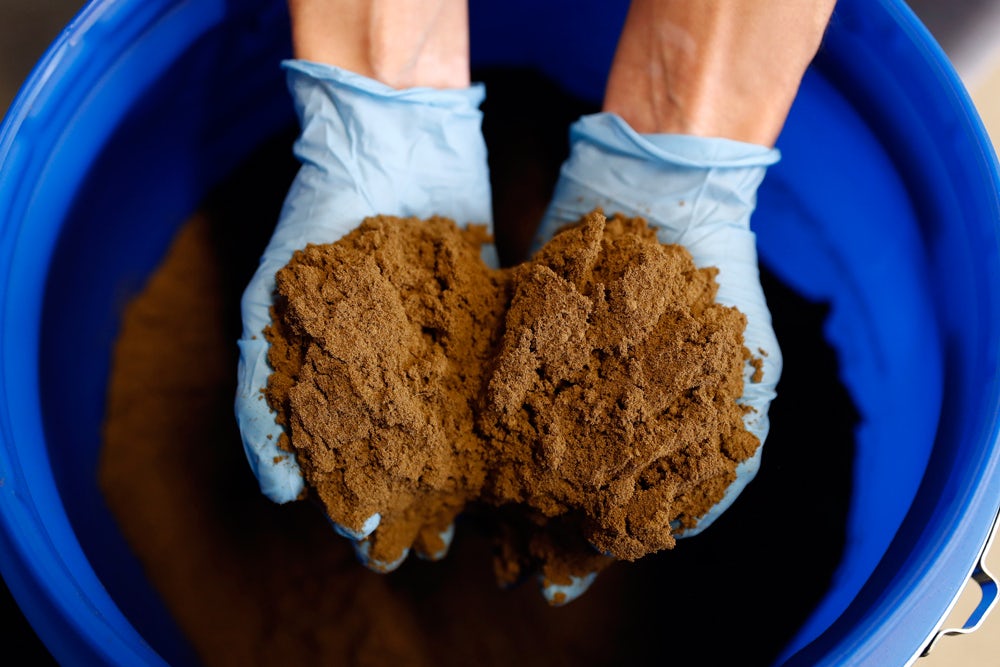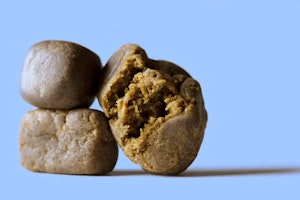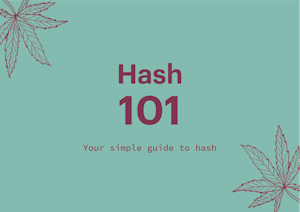
Boris Blatnik, chief strategy officer of KannaSwiss GmbH, poses for a photograph with legal hash bricks inside the greenhouse facility at KannaSwiss GmbH in Koelliken, Switzerland, on Thursday, Oct. 19, 2017. (Photo by Stefan Wermuth/Bloomberg via Getty Images)
Hashish, known as hash for short, is a product of the cannabis plant
“Hashish” is an Arabic word which translates approximately to “grass.” It first became known to Europeans and Americans in the 19th century. But hash had been known for hundreds of years prior in the Middle East, India, and beyond.
Hashish consists of the plant’s trichomes, the crystal-like drops that cover the leaves and buds. They’re what produces the cannabinoids and terpenes in each strain. When these glands are separated from the rest of the plant and collected, they are called kief. Kief is then processed into hashish. That means hash is the original cannabis concentrate, albeit a solvent-free one.
Hashish is often smoked in a pipe or bong. It’s also commonly eaten, either alone or in edibles. Although marijuana flowers are more popular than hash in North America, hash is the dominant form of cannabis in Europe.
Here’s how weed becomes hash.
The Main Types of Hash
The different types of hashish are classified according to how they’re made. We’ll start with the most basic, low-tech hashish of all.
Finger Hash
Finger hash is familiar to anyone who has trimmed a few buds of weed. As cannabis is handled, the sticky trichomes form a thick resinous coating on the fingers. Trimmers often collect this finger hashish by rubbing their hands together over a plate during the trimming process. One distinguishing feature of finger hashish is the prominence of aromatic terpenes. This is because of the freshness of the material.

Blender Hash
Considered one step up from finger hash in sophistication, blender hash requires the use of—surprise!—a blender. Cannabis, often trim, is added to the blender, along with ice and water. Blending this mixture separates the trichomes from the plant matter. The trichomes sink to the bottom when the blender is turned off. A fine screen catches the plant matter but allows the water and trichomes through. After this settles in a jar for about half an hour, the top two-thirds is poured out (be careful not to pour out any trichomes). Refrigerate this mixture for about 10 minutes, then strain it through a coffee filter. The resulting kief, once it dries, can be pressed into hashish using heat and pressure.
Silk Screen Hash
With the silk screen method, ground cannabis is shaken on a screen. The trichomes separate and fall onto a hard surface, ideally a dark one, where they can be seen and collected. This kief is then pressed into hashish. Some hashish makers use a number of progressively finer screens to create high-grade hashish with almost no vegetable matter at all.
Flat Screen Hash
In flat screening, a framed metal screen with holes between 70 and 125 microns is used. Dried trim is moved back and forth across the screen. This detaches the trichomes, which drop through the screen to collect as kief. More pressure on the cannabis creates a low-grade form of hashish with more vegetable matter.
Drum Hash
The drum method is basically an automated way to make screen hash. The trim is placed in the drum, and the drum vibrates. This makes the trichomes fall through the fine screen. This can continue for hours. It yields a fine grade of kief, which can then be pressed into hashish.
Bubble Hash
Bubble hash is considered connoisseur grade material. Experts consider bubble hash, prepared with ice water and agitation, the best and purest form of hashish: the “full melt” stuff. The oily trichomes don’t mix with the water, so they are separated out. The water is then filtered through BubbleBags to collect the hashish. A system of progressively smaller filtration screens on micron bags refines the hashish down to its purest form. Yield is typically one gram of bubble hash for every 10 grams of high-quality weed.
How Kief Becomes Hashish With Heat and Pressure

A pollen press can be used to easily press kief into hashish. The press will create enough heat and pressure to get the job done.
Another method is to make the hashish into wafers. Wrap the kief in cellophane to keep it dry. The cellophane-wrapped hashish is then wrapped in paper; the paper is wetted under a tap. Ten minutes in the oven at 350 degrees F gets the hash ready to be rolled flat like cookie dough.
Herb Recommended Products:
READ MORE










